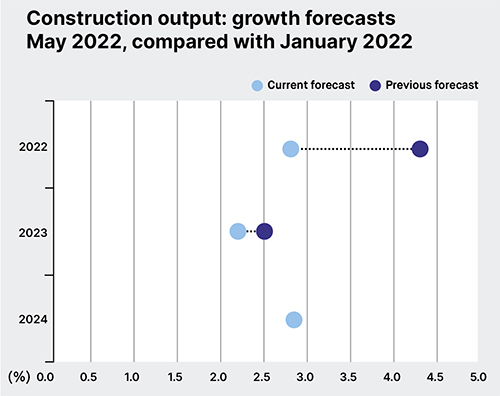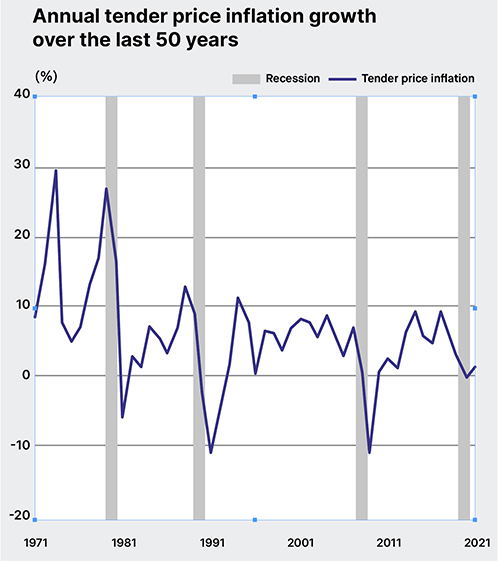Market volatility, supply disruptions and rising costs are starting to affect project viability, writes Kris Hudson.
Despite supply chain disruption over the last two years and an increasingly strained labour market, pent-up demand has buoyed confidence in the growth of the construction sector’s output. That has begun to change.
Activity levels remain robust but Russia’s invasion of Ukraine is adding to market volatility. Rising energy costs, commodity price escalation and continued supply disruptions have intensified, pushing tender prices higher.

This combination is feeding into project viability. Compounded by increased interest rates from the Bank of England, the resilience of the sector’s growth is being threatened. Investment decisions are now more finely balanced and there is a risk that projects may be postponed or even halted entirely.
This is reflected in revised forecasts. Analysis by the Construction Products Association now places growth at 2.8% for 2022 and 2.2% for 2023, down 1.5 and 0.3 percentage points, respectively, from its January 2022 forecast.
While investors may be tempted to hold back, those looking to postpone decisions might not see tender price inflation reductions materialise.
There are variances depending on project type, location and scope, however tender prices typically increase over time. During the last 50 years, prices have fallen just six times on an annual basis, all of which were linked to recessionary periods.
The Bank of England’s May monetary policy report forecasted that Gross Domestic Product might fall in Q4 2022, driven by consumer prices potentially rising to 10% which could also lower disposable incomes and consumer expenditure. Though this demand reduction may place downwards pressure on prices, supply chains remain dislocated.

Rising insolvencies continue to reduce industry capacity, which may further escalate prices due to reduced competition. High vacancies and growing wages also add to labour cost pressures.
Even if the UK unemployment rate rises from the 3.8% recorded in the three months to February 2022, skilled labour shortages, exacerbated by Brexit, are persistent in the construction industry and are likely leading to price stickiness.
Rather than assume that changing market forces will combat rising inflation, the more practical advice for projects that are at investment stage is for clients to forecast and assess risk at the outset. Robust cost planning, estimating and value management are also key to making the right decisions. In the face of multiple uncertainties, getting the basics right can be integral when trying to manage price fluctuations and maintain growth in the months to come.
Kris Hudson is an economist and associate director at Turner & Townsend











